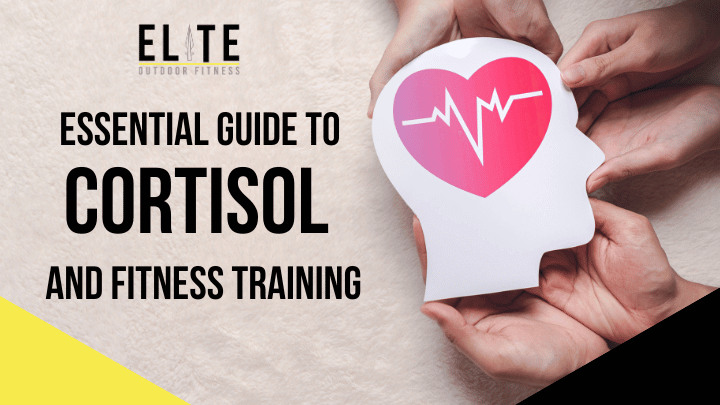Body systems
When we train there are a number of different systems in the body that are all working together to aid what we are trying to achieve.

When we train there are a number of different systems in the body that are all working together to aid what we are trying to achieve. At EOF we look into each of the body’s systems and their specific role in how they influence and benefit how we train. These hidden and often overlooked body functioning systems have the potential to stop us in our tracks in a race, event or training session. They need to be managed well.
It is important to understand what type of sessions and at what percentage of maximum heart rate impacts on these different systems. Overexerting yourself in the first three of eight 600-meter efforts, for example, will result in you not getting the most benefit from the whole session. You will have overwhelmed certain body systems that will just struggle to recover for the next sets of efforts, meaning you are not achieving your goal of training at your maximal training zone because you are too tired.
When you train a specific way, you are stressing your body or certain systems in an optimal way to ensure your body maximises the adaptation after the session. It is important to stick in the correct training zone. More is not always better!
The skeletal system
Stresses on your skeletal system such as walking, running, biking, swimming, resistance training and load-bearing exercises force you to work harder and apposing gravity. This will increase your bone density, strength and mass.
As a general rule bone mass will improve by means of replenishing old bone material up until about 30-40 years of age, thereafter, generally bone density and mass decrease with age. You can help prevent this loss with regular exercise.
Weight-bearing and resistance training are the best methods for bone maintenance. EOF has a structured training method that brings all the fundamentals into play.
Respiratory System
We breathe in oxygen, collect the carbon dioxide in our body and exhale it. When we train and stress this respiratory system it becomes stronger and more efficient. Air moves down the trachea into either one of the lungs by means of the bronchus. Air moves into the bronchioles which are the size of hairs which get smaller and smaller moving the oxygen to small sacks called alveoli. This allows oxygen to pass through to the blood and for the carbon dioxide to return from the blood to the lungs for exhaling.
When exercising we build stronger muscles to help with breathing. Exercise helps with the removal of waste products from the lungs. We need more oxygen and we need to get rid of more carbon dioxide. We have to increase our breathing to facilitate this and the increased blood circulation. All this helps a number of different processes such as sending oxygen to the muscles to help with your energy efficiency to keep your muscles working.
Engaging in fitness will improve lung capacity. It is true that smoking and other illnesses can affect your lung function which then cannot be reversed, but lung capacity can be greatly improved and this, in turn, influences the effectiveness of all the others system responses when becoming healthier.
Circulatory systems
The heart is a muscle that can be strengthened. You do not need to work any harder than 60% of your Maximum Heart Rate (Max HR) just to start to help the heart become stronger and improve stroke volume efficiency. Nerves are a key component of the heart that can be influenced. Sympathetic nerves receive impulses from the brain and tell the heart to increase pump rate when needed. Parasympathetic nerves tell the heart when to slow down just like a brake. These nerves are connected to our autonomic nervous system.
- Coronary circulation – carries blood and nutrients around the heart muscle.
- Pulmonary circulation – carries blood to and from the lungs facilitating the respiratory system response.
- Bronchiole circulation – supplies blood to the tissue of the larger airways in the lungs.
- Systemic circulation – sends blood around the body supplying oxygen and nutrients.
Blood vessels, arteries, capillaries and veins. Arteries are elasticated to facilitate the changes in blood pressures. Capillaries are smaller blood vessels. Veins are wider and thus reduce blood pressure. Arteries carry oxygenated blood around the body and veins return deoxygenated blood to the heart.
Urinary system
The kidneys are part of this system and play an important role in the disposal of waste through urine from cleansed blood. Most people have two kidneys and these act as filters.
Muscular system
Skeletal muscles – voluntary.
Skeletal muscles are attached to the bones and move with our thought processes, resulting in electrical impulses sent from the brain. Such muscles are our triceps and quadriceps.
Smooth muscles – involuntary.
These muscles move without thought and are controlled by the autonomic nervous system. They are involved in vital processes such as within the heart, function of breathing and our digestion.
All of the skeletal muscles have muscle fibres, tendons and ligaments. Skeletal muscle tendons attach the muscle to the bone. At the end of each muscle, there is a bone and joint. Collagen is a protein and is a major component of connective tissue that makes up our body including skin, muscles tendons and ligaments. It also plays a huge role in the strengthening of bone.
NB – There is a lot happening at a joint when carrying out movements. There are stresses being continually being applied to the muscles, ligaments and tendons. The importance of slowly building muscular strength, flexibility and mobility in the joint will reduce the risk of setbacks through injury. A balanced diet to allow the repair and building of connective tissue is fundamentally important. When you are training it’s vital that you understand how important it is to look after your body at all levels. This has to be considered as running in parallel with the training plan. Ignore it at your peril!
Endocrine System
This is a system that manages hormones which are released into the blood. These hormones help to regulate and maintain balance when and where needed. These chemical messengers have a huge effect on tissue and organs. It regulates metabolism and helps manage physiological processes occurring throughout the body.
Exercise will impact the endocrine system in many ways. Try and better understand your body, its needs and the importance of a well-balanced diet when training. Good structured progressive training will assist your endocrine system in increasing performance rather than impeding it.
Lymphatic and immune system
This system helps in the removal of waste products from the body which can include bacteria, toxins, viruses and unwanted cells. These can lead to illnesses and conditions that have a negative impact on short and long-term health.
There is a network of vessels throughout the body filled with lymph fluid. These vessels lead the fluid to nodes throughout the body that house immune cells that kill bacteria and harmful viruses. The fluid is then drained off into the bloodstream where it eventually passes through the kidneys where the waste is removed and passed through urine.
The lymphatic system is stimulated by exercise. The increased heart rate and blood flow brought on by exercise do wonders in increasing the efficiency of the lymphatic system. It allows more removal of waste products, thus preventing infections and diseases. Muscular contraction will also help in the flow of the lymphatic fluid.
Exercise helps with weight loss and this will help with lymphedema, which is when someone has excess fat that restricts the flow of the lymphatic fluid through the lymphatic system, resulting in a less efficient immune system.
Related Articles
If you've enjoyed this post why not try these related articles…



